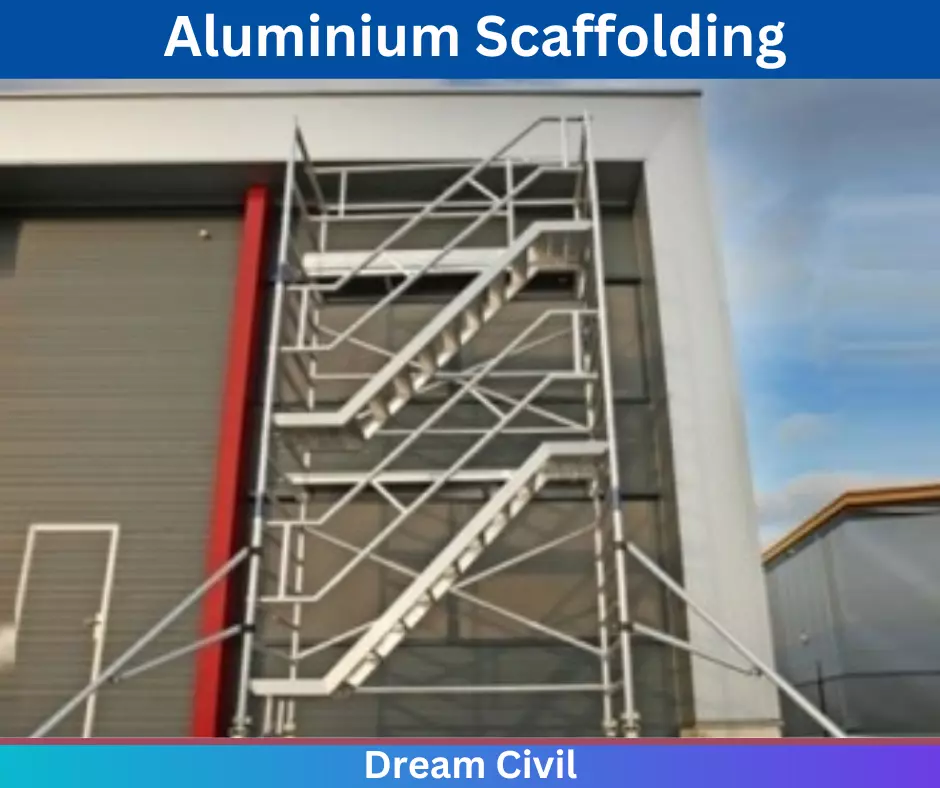Table of Contents
In this article, we will discuss aluminium scaffolding.
Scaffolding is a temporary rigid structure to facilitate masons as a “platform to work” as the building height increases.
Or,
The temporary network erected to support several platforms for the convenience of workers is called scaffolding.
When the height of the wall or column or other structural members of a building exceeds about 1.5 m, temporary structures are required to support the platform over which the workmen can sit and continue the construction. These temporary structures which are built very close to the surface of the wall generally in the form of timber or steel framework are said to be scaffolding.
For safety and integrity, each and every component of the scaffold should be checked properly before use.
Aluminium scaffolding has become Increasingly popular for construction, remodelling, and repair projects. But because of the plethora of benefits, we’re also seeing its applications in relevant industries and projects like railways, docks, fire protection, aviation, and telecommunication.
1. Uses of Aluminum Scaffolding
In typical construction projects, an aluminium scaffold acts like a provisional structure or a temporary platform that support workers. Be it a modification to the exterior of a building or a repair in the interior; scaffold towers are a safe and easy access solution. It supports construction workers, inspectors, cleaners, and other labourers that need to work at height.
Unlike steel, it is a lightweight alternative that helps easy manoeuvring throughout project areas. Because of ease of handling, it improves productivity and pace of work.
While planning to work at heights, it is pretty important to plan an access solution that is durable and safe.
Both contractors and construction professionals are adopting the use of aluminium scaffolding ladders, platforms, and towers because of their durability and cost-effectiveness. They come with a lightweight design and can easily adapt to your project requirements.

2. Safety Tips for Scaffolding
To prevent and reduce the percentage of scaffold accidents, here are some of the safety measures:
a. Properly trained workers should be engaged in work by wearing adequate PPE.
b. Scaffold should have a handhold above its platform.
c. Adjustment of leg screws of the scaffold should not exceed 12 inches.
d. Safety belts and lanyards should be used at a height of 10 feet or more above the ground level.
e. Plank is overlapped or not should be checked to avoid movement.
f. There should be the use of a net below the working platform of the scaffold to catch falling objects or persons.
g. Wheels of scaffolds should be stabilized with a stone lock preventing rolling or moving of scaffolding.

3. Precautions to be taken for Scaffolding safety
a. Scaffolds should not be stood in slippery or muddy or snowy places.
b. Don’t overload the scaffolds beyond their weight-carrying limit.
c. Feet should be kept on the decking properly.
d. Don’t lean on the scaffolds to avoid hazardous movements.
e. Scaffold component’s stability should be checked properly.
f. Only inspected tagged scaffolds should be used.
Read Also: Gypsum Plaster

